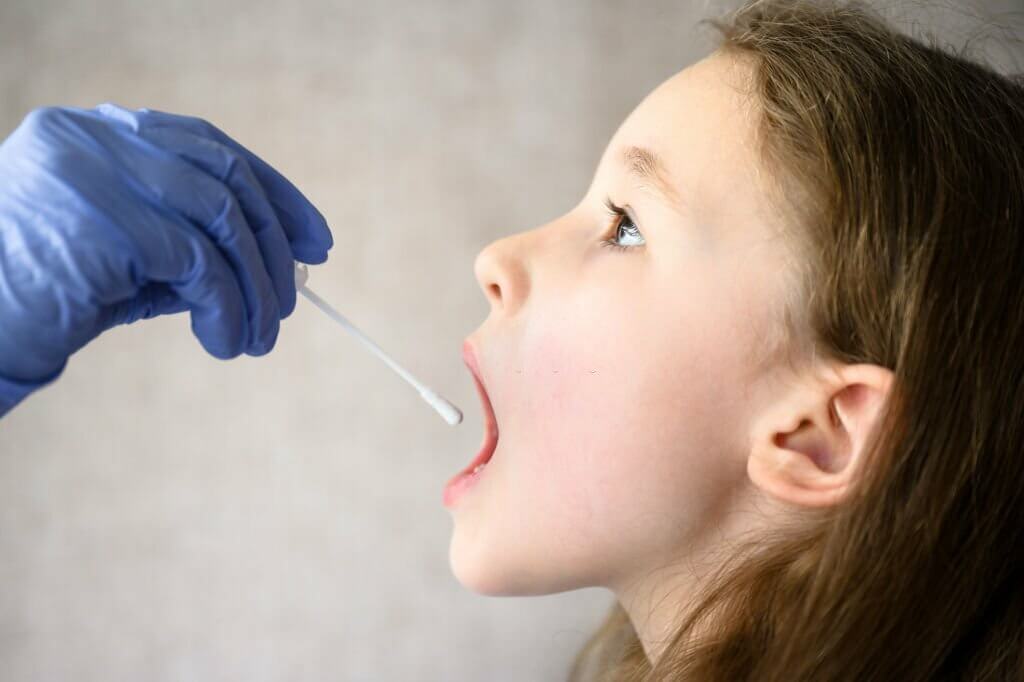The Potential of Oropharyngeal Swabs for Rapid Diagnosis of Community-Acquired Pneumonia

Community-acquired pneumonia (CAP) is a major cause of hospitalization and death worldwide. Traditionally, sputum cultures have been used to identify the causative pathogens in CAP, but they are slow and insensitive. A recent study tried to find out if oropharyngeal (OP) swabs provide a faster and easier alternative for rapid molecular diagnosis of CAP.
How Do OP and LRT Samples Compare for Detecting CAP Pathogens?
In this study, paired OP swabs and LRT samples from 103 CAP patients were tested using a syndromic PCR panel (Biofire FilmArray Pneumonia plus). For the main CAP bacteria Streptococcus pneumoniae and Haemophilus influenzae, OP swabs had 85-86% positive agreement and 99% negative agreement with LRT samples. The positive predictive value was excellent (>95%) for these pathogens. OP swabs thus reliably reproduced LRT results.
What About Other Bacteria?
For Moraxella catarrhalis, positive agreement was lower (74%) though still substantial. Negative agreement remained very high (100%). For less common CAP pathogens like Staphylococcus aureus and Enterobacterales, concordance was poorer. These are more likely colonizers or contaminants, emphasizing the need to interpret positive PCR results in clinical context.
How Did OP and LRT Samples Compare for Viruses?
OP swabs had high negative agreement but more variable positive agreement with LRT samples for viruses like rhinovirus and RSV. Viral detection rates were generally higher in LRT samples. This suggests viral PCR on OP swabs may lack sensitivity for diagnosing viral pneumonia.
What Are the Implications?
For common bacteria causing CAP like S. pneumoniae and H. influenzae, rapid molecular testing of OP swabs provides results comparable to LRT samples. OP swabs are faster and easier to obtain. Using them as an alternative to sputum could enable rapid microbiological diagnosis and guide treatment in early CAP management. However, clinical correlation is still important when interpreting positive results, especially for less typical pathogens.
In summary, with their speed and convenience, OP swabs analyzed by molecular panels show promise as a rapid diagnostic approach for CAP in emergency settings. LRT sampling remains important for comprehensive diagnosis and in complex cases. Further studies on the clinical utility and impact of OP swab testing on CAP outcomes are still needed.
Click to View → Mantacc 93050D Oropharyngeal Swab
Reference
Serigstad S, Knoop ST, Markussen DL, Ulvestad E, Bjørneklett RO, Ebbesen MH, Kommedal Ø, Grewal HMS. Diagnostic utility of oropharyngeal swabs as an alternative to lower respiratory tract samples for PCR-based syndromic testing in patients with community-acquired pneumonia. J Clin Microbiol. 2023 Sep 21;61(9):e0050523. doi: 10.1128/jcm.00505-23. Epub 2023 Aug 16. PMID: 37585220; PMCID: PMC10512787.









